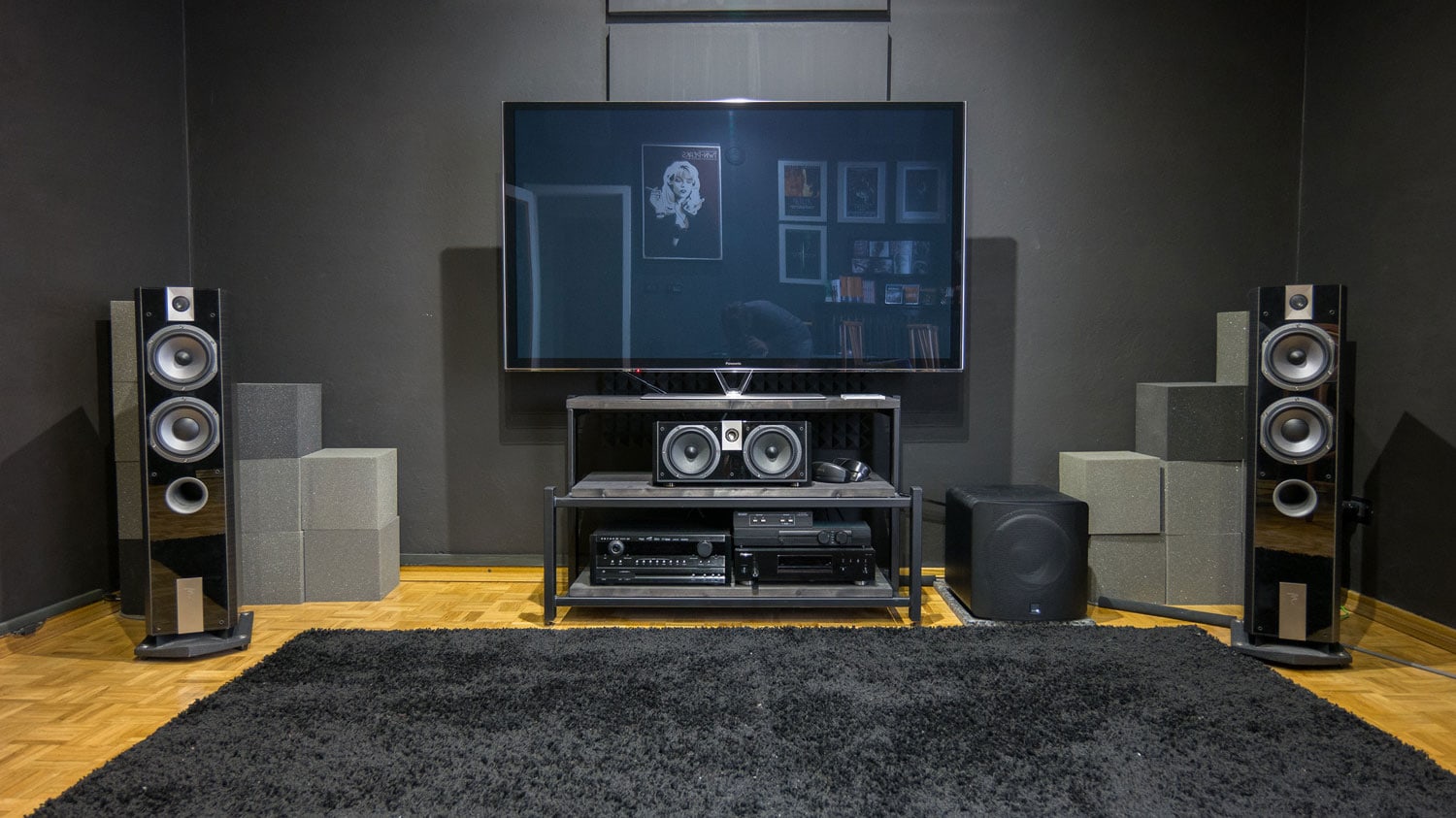Home theatres are just so darn cool, aren’t they? And they’re coming closer and closer to the real cinematic experience.
Watching television and films at home is a pursuit many of us have loved for decades.
Over this time, the act has evolved into an institution formed by tradition as much as reason.
Most commonly, viewing entertainment on a big screen has seemed like the best way to consume brilliant content, but this might no longer be the case.
We want to explore why doing something different could provide undeniable benefits for the right person.
Viewing, Playing, App Building, and More

Credit: Marco Neg.91
Read more: Has Nolan’s Tenet Killed Off The Rest Of 2020’s Cinema Releases?
Before looking at the advantages of different systems, we first need to appreciate how developments in technology have led to better choices in how we engage.
The foundation of this progress has two primary fronts.
The first is the popularity of mobile devices, which has opened up our willingness to try new things through ubiquitous availability.
In simple terms, we all have smartphones, so we all have another way to try gaming, viewing, listening, and more.
Mobile ubiquity has influence far beyond just the smartphone platforms, with crossover effects reaching onto other systems like desktops and even televisions.
Fundamentally this ties into the backing software as illustrated by Android operating systems.
While systems like Android OS have long been used on mobiles, it’s also found their way onto many modern smart TVs, and now these apps are even natively supported by Windows 11.
This leads us to the change in the second front as illustrated by the growth of the app builder businesses.
Now a developed industry, modern companies offer streamlined tools which are simple enough to use for newcomers, and powerful enough to cater to digital professionals.
Including total creative freedom, up-to-date technology, and the ability to sync mobile and website content, these systems have brought mobile access to an unprecedented new level.
App building is now so important thanks to the wider level of access to mobile system OSs.
Apps made primarily for mobile are flexible enough to run different screen sizes with functionality that plays perfectly over a wide range of devices.
Smartphones, PCs, and smart TVs are all captured under this net and are all easier to design and maintain than ever.
In other words, mobile apps have driven growth, and now they’re usable on many different systems and screens.
What’s in a Home Theatre?
The traditional home theatre setup involves a high-end television or projector, large speakers and subwoofers, and access to a high-def movie player like a Blu-ray drive or media server.
Combined with high-quality seating and the ability to make the room theatre-dark, you have an experience to which many of us have long aspired.
The only problem is, this solution is often not realistic, possible, or even preferable to other methods.
Problem Areas
Finding its place as the first biggest problem of a home theatre setup is the cost.
Big TVs aren’t cheap, and neither is the best quality seating or audio.
Expanding this issue is that creating the right environment takes a lot of room.
Depending on your income and where you live, dedicating this much space to a home theatre could be prohibitively expensive, if not outright impossible.
On top of this problem, users also need to consider issues of sound travelling or the impossibilities of modifying an environment if you’re renting.
In some cases, even getting large TVs up a flight of stairs without elevator access could make taking this route a non-starter.
So, what other opportunities could we try?
Taking a New Tack

Credit: Marco Neg.91
Read more: Could the Nintendo Switch Be the Console We’ve Been Waiting For?
The easiest solution for new forms of viewing is the one many of us have already adopted–the simple use of smaller television sets and lounges.
More casual and entry to mid-level systems are affordable, transportable, and are flexible enough to work for many different uses.
From watching Binging with Babish on YouTube to settling down for yet another viewing of Seven Samurai, a regular TV setup is fine, but there’s also another name in the game.
This name, which many traditionalists would scoff at, is the tablet.
Formerly dismissed as an accessory, tablets have come a long way since Apple popularised the systems with iPad in 2010.
Modern tablets offer enormous memory capacities, ultra-high resolutions with HDR support, and, best of all, a level of flexibility available nowhere else.
With a tablet, you could carry your favourite shows and movies with you not just anywhere in the house, but also around town, and even on vacation.
Of course, those who own delivery companies and have a lot of time on their hands could also manage this approach with a home theatre system, but that’s not an especially viable tactic.
Alongside convenience, the ability to easily transport systems also comes with enormous potential in ergonomics, which we all need to pay more attention to.
Though there are a couple of issues we can have with tablets, these can be addressed with some tech or the right view.
Sound quality is the big one here, which will never match up to a home theatre setup, or even a humble TV.
A midrange set of headphones can eliminate this problem, however, and can also serve for other uses like listening to music while out and about.
The other big complaint we see people make about tablets is that the small size ruins the theatre experience, but this issue is often overrated.
In general, home setups have the user seated far away from the screen.
If this is you, then hold your phone up at your regular mobile distance, and check how much of your field of view this obscures relative to the TV.
A tablet is even bigger, meaning that, at least in terms of field of view, there’s not that much of a difference at regular use distances.
We’re not saying that simple TVs or tablets are a total replacement to home theatres setups, but we would recommend readers take their advantages seriously.
As a stop-gap measure, or just as a more intimate way to watch movies with a loved one, different approaches can offer a lot more than we might think.
Just be sure not to drop them.
What do you make of this story? Let us know in the comments below or on our Facebook, Twitter or Instagram pages!
And if you enjoy listening to film podcasts, why not check out our podcasts, Small Screen Stories and Small Screen Film Club wherever you get your podcasts!

















There are no comments
Add yours